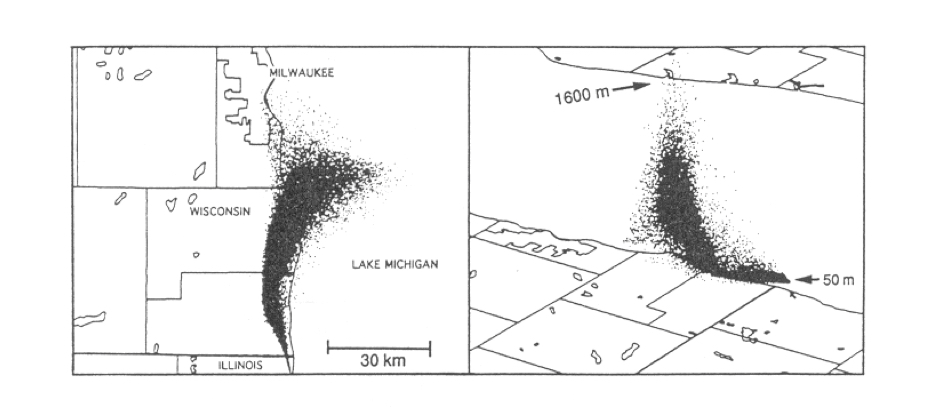Lagrangian Particle Models Advanced

Reading Guide
In a Lagrangian stochastic model (LSM), also called Lagrangian Particle or Random Walk model, the motion of air masses or particles passively following the flow is studied. To simulate the presence of turbulent eddies, particle velocities are subject to a random forcing. Consequently, these models are of stochastic type. The fictitious particles (computer-particles), which represent pollutant gases or aerosols, are considered small enough to follow the motion of smallest eddies and, at the same time, big enough to contain a large number of molecules. Each particle is moved at each time step by transport due to mean wind and diffusion, related to the turbulent wind velocity fluctuations.
In the single particle models considered here, the trajectory of each particle represents an individual statistical realization in a turbulent flow characterized by certain initial conditions and physical constraints. Thus, the motion of any particle is independent of the other particles, and consequently the concentration field must be interpreted as an ensemble average.
A comprehensive chapter on Lagrangian Particle Modeling (Anfossi and Physick, 2005) from the book Air Quality Modeling - Theories, Methodologies, Computational Methods, and Available Databases and Software, Vol II (Zannetti, Ed. 2005) is included as a pdf file and presents all the methodological approaches and theories.
The most common Lagrangian particles model are:
- The SPRAY-WEB community model
- The LAPMOD system
- The Met Office's Numerical Atmospheric-dispersion Modelling Environment (NAME)
- Austal2000 Lagrangian Particle Model
- FLEXPART (“FLEXible PARTicle dispersion model”)
- HYPACT (Hybrid Particle And Concentration Transport) Model
- Graz Lagrangian Model - GRAL
Material
Initial guide prepared by P. Zannetti (8/2020). Guide updates prepared by E. Ferrero (1/2021). For corrections or expansions please contact us.